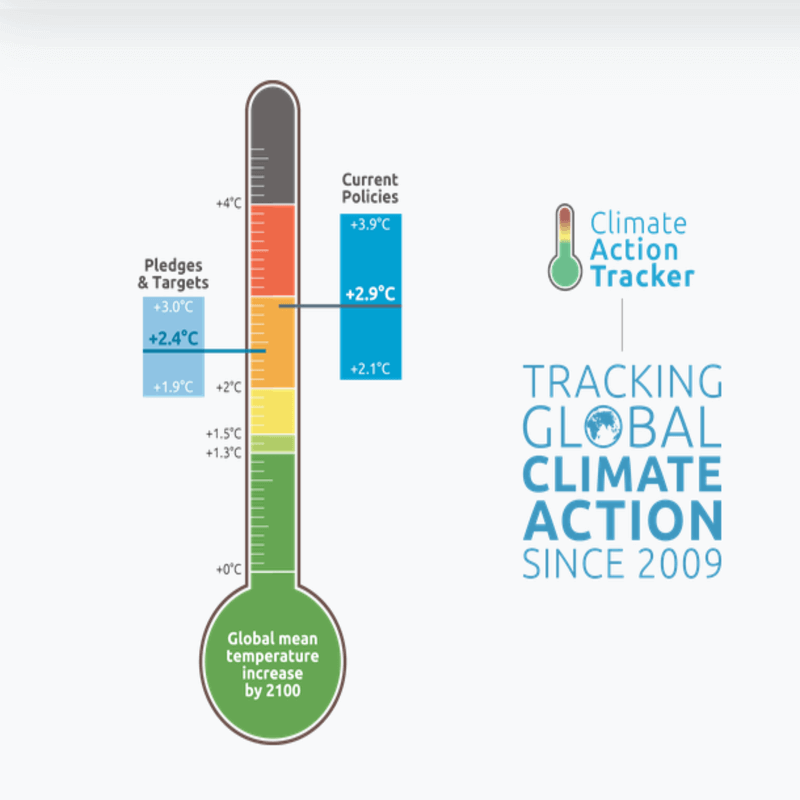
The United Kingdom hosted the 26th UN Climate Change Conference of the Parties (COP26) in Glasgow on 31 October – 12 November 2021.
The Conference of Parties (COP) is a well-known annual event that sees nations come together to discuss measures to reduce anthropomorphic global warming and steps to tackle Climate Change.
About COP26

The COP26 summit brought parties together to accelerate action towards the goals of the Paris Agreement and the UN Framework Convention on Climate Change (UNFCCC).
According to the UNFCCC, COP26 will work towards four goals:
1. Net-Zero by 2050:
- To secure Global Net-Zero by Mid-Century and keep 1.5 degrees within reach.
- Countries are being asked to come forward with ambitious 2030 emissions reductions targets that include reaching net-zero by the middle of the century.
- To deliver on these stretching targets, countries will need to:
- Accelerate the phase-out of coal
- Curtail deforestation
- Speed up the switch to electric vehicles
- Encourage investment in renewable sources of energy.
2. Adapt to Protect Communities and Natural Habitats:
- Countries will work together to ‘protect and restore ecosystems and build defences, warning systems, and resilient infrastructure and agriculture to avoid loss of homes, livelihoods and even lives.’
3. Mobilise Finance:
- Developed countries must make good on their promise to mobilize at least USD100bn in climate finance per year.
- International financial institutions must play their part and we need to work towards unleashing the trillions in private and public sector finance required to secure global net zero.
4. Work Together to Deliver:
- Another important task at the COP26 is to ‘finalize the Paris Rulebook’.
- Leaders will work together to frame a list of detailed rules that will help fulfil the Paris agreement.
The outcome of the COP26- the Glasgow Climate Pact gives new building blocks to advance implementation of the Paris Agreement through actions that can get the world on a more sustainable, low-carbon pathway forward.
The Glasgow climate pact
The following were agreed upon in the Glasgow Climate Pact by the nations of the world:
Recognizing the emergency
Countries reaffirmed the Paris Agreement goal of limiting the increase in the global average temperature to well below 2°C above pre-industrial levels and pursuing efforts to limit it to 1.5 °C.
Accelerating action
Countries stressed the urgency of action when carbon dioxide emissions must be reduced by 45 percent to reach net-zero around mid-century. But with present climate plans and the Nationally determined Contributions are falling far short. Hence the Glasgow Climate Pact calls on all countries to present stronger national action plans next year, instead of in 2025, which was the original timeline.
Moving away from fossil fuels
The countries agreed to a provision calling for a phase-down of coal power and a phase-out of fossil fuel subsidies – two key issues that had never been explicitly mentioned in decisions of UN climate talks before.
Delivering on climate finance
Developed countries came to Glasgow falling short on their promise to deliver US$100 billion a year for developing countries and expressed confidence that the target would be met in 2023.
Stepping up support for adaptation
The Glasgow Pact calls for a doubling of finance to support developing countries in adapting to the impacts of climate change and building resilience.
Completing the Paris rulebook
Countries reached an agreement on the remaining issues of the so-called Paris rulebook, the operational details for the practical implementation of the Paris Agreement.
Focusing on loss & damage
Acknowledging that climate change is having increasing impacts on people especially in the developing world, countries agreed to strengthen a network— known as the Santiago Network, that provides vulnerable countries with technical assistance, knowledge, and resources to address climate risks.
They also launched a new “Glasgow dialogue” to discuss arrangements for the funding of activities to avert, minimize and address loss and damage associated with the adverse effects of climate change.
New announcements at COP26
There were many other significant deals and announcements which can have major positive impacts if they are implemented. These include:
Forests: 137 countries took a landmark step forward by committing to halt and reverse forest loss and land degradation by 2030. The pledge is backed by $12bn in public and $7.2bn in private funding.
Methane: 103 countries, including 15 major emitters, signed up to the Global Methane Pledge, which aims to limit methane emissions by 30 percent by 2030, compared to 2020 levels. Methane, one of the most potent greenhouse gases, is responsible for a third of current warming from human activities.
Cars: Over 30 countries, six major vehicle manufacturers, and other actors, like cities, set out their determination for all new car and van sales to be zero-emission vehicles by 2040 globally and 2035 in leading markets, accelerating the decarbonization of road transport, which currently accounts for about 10 percent of global greenhouse gas emissions.
Coal: Leaders from South Africa, the United Kingdom, the United States, France, Germany, and the European Union announced a ground-breaking partnership to support South Africa – the world’s most carbon-intensive electricity producer— with $8.5 billion over the next 3-5 years to make a just transition away from coal, to a low-carbon economy.
Private Finance: Private financial institutions and central banks announced moves to realign trillions of dollars towards achieving global net-zero emissions. Among them is the Glasgow Financial Alliance for Net Zero, with over 450 firms across 45 countries that control $130 trillion in assets, requiring its member to set robust, science-based near-term targets.
Key terms to know from COP26
What is net-zero?
- Net-zero emissions pertain to achieving an overall balance between greenhouse gas (GHG) emissions produced, and GHG emissions removed from the atmosphere.
- A country can be said to be net-zero when it produces no emissions, either because it has actually phased out all emissions or because it is removing enough from the atmosphere to offset the emissions it releases.
- The latter can be achieved by restoring or increasing forest cover or through technologies such as carbon capture.
What is carbon neutrality?
- Carbon neutrality is a state of net-zero carbon dioxide (CO2) emissions. It is achieved when anthropogenic CO2 emissions are balanced globally by anthropogenic CO2 removals over a specified period.
- There are several actions that an emitter can take to achieve this balance, such as reducing energy consumption and emissions-producing activities, improving energy efficiency processes, and consumption of renewable sources of energy.
- A nation or an organization can also achieve carbon neutrality through carbon offsetting, a process of compensating for CO2 emissions it generates by participating in, or funding efforts to remove CO2 from the atmosphere.
- Offsetting usually involves paying another party, somewhere else, to save emissions equivalent to those produced by the emitter.
What is the carbon footprint?
- A carbon footprint measures the amount of CO2 equivalent a country, an industry, an individual, or a product emits or is responsible for.
- The footprint is calculated in both direct emissions (from the burning of fossil fuels, heating, and transportation), and indirect emissions during the whole lifecycle of products.
- It also includes emissions of other greenhouse gases, such as methane, nitrous oxide, or chlorofluorocarbons (CFCs).
- It is expressed as a measure of weight, as in tons of CO2 or CO2 equivalent per year.
What are carbon credits?
- Carbon credits are a system of purchasing and trading carbon emissions to mitigate the growth in concentrations of global atmospheric CO2 levels.
- The term carbon credit usually refers to a tradable certificate or permit that shows a company, industry, or country, has paid to remove a certain amount of CO2 from the atmosphere.
- This certificate gives them the right to emit 1 tonne of CO2 or the equivalent of different greenhouse gas. It is used by individuals or businesses to reduce their carbon footprint through investing in an activity that reduced, removed, or sequestered greenhouse gases at another site.
- The trading of carbon credits has turned them into a type of climate currency, subject to supply and demand, just like fiat currencies.
India at COP26
India is the 3rd largest emitter in terms of net emissions whereas it has the lowest per capita emission among the major economies of the world (17% of the world population emitting just 5% of total).
India has announced its net-zero targets in COP26 s accordance with the Paris Agreement of 2015.
Under the Paris Agreement, countries were bound to submit carbon-cutting plans and updates by the end of 2020.
India’s 5-point pledge or Panchamrit:
- Net-zero by 2070
- To increase its non-fossil fuel energy capacity to 500 GW by 2030.
- Increase the share of renewables in the energy mix to 50% by 2030.
- Reduce the emissions intensity of its economy by 45%.
- Reduce emissions by 1 billion tonnes of CO2.
India also supported the Africa Group’s demand for $1 trillion in climate action that the developed countries should make available for climate action in developing nations.
India’s efforts at present
- India’s renewable energy capacity is 4th in the world as of now and growing at a rapid rate.
- India has seen an increase of about 25% in renewable energy capacity in the last four years.
- Indian railways, one of the largest emitters has promised to reach net-zero by 2030– this alone will reduce 60 million tonnes of emissions.
- India has launched international institutions for climate action such as the International Solar Alliance (ISA), Coalition for Disaster Resilient Infrastructure (CDRI),
- India along with the UK and Australia will launch the Infrastructure for Resilient Island States (IRIS) for the island nations and developing countries.
- India will also be part of the launch of the Green Grids Initiative.
UPSC CSE Mains Questions about COP26
Question) Describe the major outcomes of the 26th session of the Conference of the Parties (COP) to the United Nations Framework Convention on Climate Change (UNFCCC). What are the commitments made by India at this conference? (Answer in 250 words) – UPSC CSE Mains 2021 General Studies Paper 3
Question) Explain the purpose of the Green Grid Initiative launched at the World Leaders Summit of the COP26 UN Climate Change Conference in Glasgow in November 2021. When was this idea first floated in the International Solar Alliance (ISA)? (Answer in 150 words) – UPSC CSE Mains 2021 General Studies Paper 3





